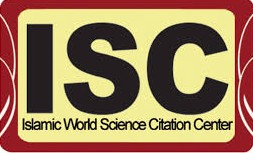Referral and Prosecution Authority before the International Criminal Court According to the 1998 Rome Statute
DOI:
https://doi.org/10.35246/jols.v37i1.455Keywords:
Referral, Prosecutor, Commencement of investigation, Security Council, National Judiciary, International CourtsAbstract
The ICC is a reclining judicial body that punishes ordinary persons for crimes committed and falls within its jurisdiction in accordance with article (5) of the Court's Statute: crimes of extermination, war, aggression, and crimes against humanity. This gives the international community the right as affected by these acts to initiate criminal proceedings to punish the perpetrator. However, this right has not been left so and without regulation, but has been enshrined in the Rome Statute - whether with regard to those who are qualified to exercise this right, or with the restrictions to which it responds, requiring the ICC to exercise its powers to take some previous actions in contact with the Court in connection with the case, the most important of which is to refer the case either through a State party, or not by a party, or through the Security Council - in relation to any situation that threatens peace and international security to the Prosecutor of the Court, and the prosecutor The general investigation after he was authorized by the Pretrial Affairs Department.
Downloads
References
Arabic References:
i. Statute of the International Criminal Court
ii. Attia, Abo al-Khair Ahmed, 1999, The Permanent International Criminal Court: A Study of the Statute of the Court and the Crimes that the Court is Competing to Consider, Dar Al-Nahdha Al-Arabiya, Arab Republic of Egypt.
iii. Al-Obaidi, Khaled Akab Hassoun: 2007, The Principle of Integration in the Criminal Court, Dar Al-Nahdha Al-Arabiya.
iv. Shaheen, Shaheen Ali, 2004, Rome Agreement Concerning the Establishment of the International Criminal Court, Journal of Legal and Economic Sciences, College of Law, Ain Shams University, Issue 1, January.
v. Bassiouni, Sherif, 2002, the International Criminal Court, its Establishment and Statute, with a study of the history of International Commissions of Inquiry and Previous International Criminal Courts, 1st Edition, Mataba' Roze Al-Yousef Al-Jadida, Cairo.
vi. Al-Tabtabaei, Adel, 2003, The Statute of The International Criminal Court and Its Conflict With The Provisions of The Kuwaiti Constitution, Journal of Law issued by The Scientific Publication Council of Kuwait University, Supplement to The Second Issue of The Twenty-Seventh Year.
vii. Al-Masadi, Adel Abd Allah, 2014, International Criminal Court - Jurisdiction and Referral Rules, Dar Al-Nahdha Al-Arabiya, 2nd Edition Arab Republic of Egyp.
viii. Nouaydi, Abd Al-Aziz, 2005, The Relationship Between The International Criminal Court and the Security Council, Moroccan Journal of Law, Economy and Management, No. 51.
ix. Al-Hasnawi, Abd Al--Qader Ahmed Abd Al-Qader, 2007, International Criminal Court, Dar Al-Nahdha Al-Arabiya 1st Edition Cairo.
x. Shehab, Mofeed Mahmoud, 1990, International Organizations, Dar Al-Nahda Al-Arabiya, and Amer Salah El-Din, 1998, International Organization Law, sixth Edition.
xi. Proceedings of the Rome Diplomatic Conference of Plenipotentiaries Concerning the Establishment of the Court, Summary Records of the Sixth Plenary Session 17. June 199, Doc. No. A/CONF.183/SR.6/P.5(.
English References
i. Neha jain- A Separate law for Peacekeepers: 2005, The Clash between the Security Council and the International Criminal Court. EJIL, vol,16,No,2
ii. William Aschabas, 2001, (an introduction to the ICC) Cambridge university press.
iii. Luigi condorelli and Annalisa ciampi, 2005, Comments on the Security Council Referral of the Situation in Darfur to the ICC. JICJ. VOL. 3.
iv. Andre. Hute. 2001, et koering joulin (Renee) Droit Penal International PUF. paris. 2 edition.
v. Lijun Yang, Some Critical Remarks on the Rome Statute of the International Criminal Court.
Downloads
Published
Issue
Section
License

This work is licensed under a Creative Commons Attribution 4.0 International License.
Copyright and Licensing:
For all articles published in Journal of Legal Sciences, copyright is retained by the authors. Articles are licensed under an open access Creative Commons CC BY 4.0 license, meaning that anyone may download and read the paper for free. In addition, the article may be reused and quoted provided that the original published version is cited. These conditions allow for maximum use and exposure of the work.
Reproducing Published Material from other Publishers: It is absolutely essential that authors obtain permission to reproduce any published material (figures, schemes, tables or any extract of a text) which does not fall into the public domain, or for which they do not hold the copyright. Permission should be requested by the authors from the copyrightholder (usually the Publisher, please refer to the imprint of the individual publications to identify the copyrightholder).
Permission is required for: Your own works published by other Publishers and for which you did not retain copyright.
Substantial extracts from anyones' works or a series of works.
Use of Tables, Graphs, Charts, Schemes and Artworks if they are unaltered or slightly modified.
Photographs for which you do not hold copyright.
Permission is not required for: Reconstruction of your own table with data already published elsewhere. Please notice that in this case you must cite the source of the data in the form of either "Data from..." or "Adapted from...".
Reasonably short quotes are considered fair use and therefore do not require permission.
Graphs, Charts, Schemes and Artworks that are completely redrawn by the authors and significantly changed beyond recognition do not require permission.
Obtaining Permission
In order to avoid unnecessary delays in the publication process, you should start obtaining permissions as early as possible. If in any doubt about the copyright, apply for permission. Journal of Legal Sciences cannot publish material from other publications without permission.
The copyright holder may give you instructions on the form of acknowledgement to be followed; otherwise follow the style: "Reproduced with permission from [author], [book/journal title]; published by [publisher], [year].' at the end of the caption of the Table, Figure or Scheme.











